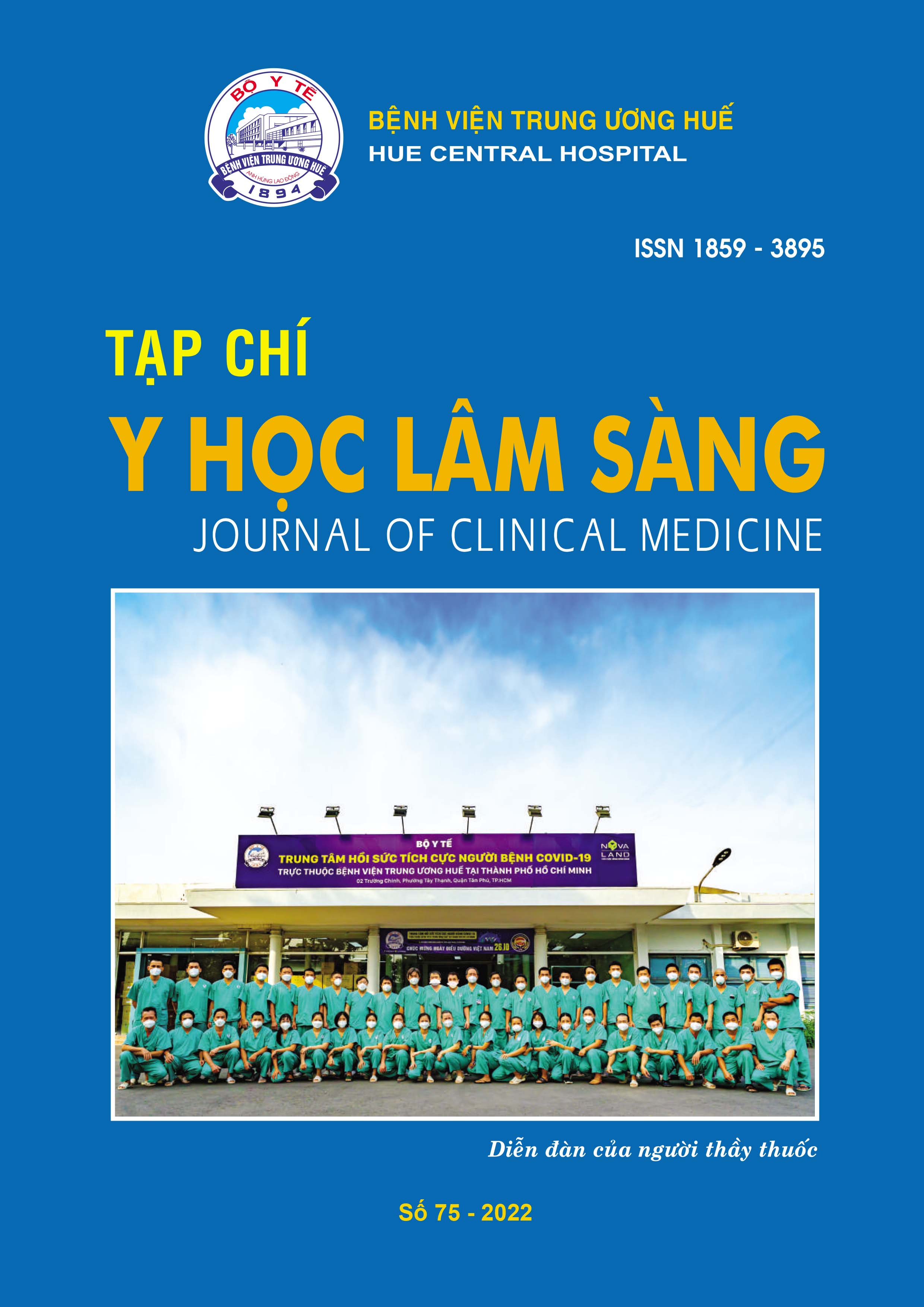Abstract
Background: The treatment of COVID-19 patients, especially the severely ill and critically ill, is still a challenge for the limited health sector in the current context of our country. Therefore, it is necessary to rely on clinical signs and available tests to assess the severity and possibility of severe progression of the disease to have a timely approach. Among them, ferritin and d-dimer are thought to be biomarkers related to the severity of COVID-19 disease. Therefore, this study aims to evaluate the increase in plasma ferritin concentration and the plasma concentrations of d-dimer in COVID-19 patients and to determine the cut-off of d-dimer to prognosis the severity in COVID-19 patients.
Methods: A cross - sectional study was performed on 209 COVID-19 patients at COVID-19 Intensive Care Center ofHue Central Hospital in Ho Chi Minh city from August 2021 to November 2021. All patients were evaluated the severity of disease based on symptoms, signs, and saturation of oxygen in the blood and were measured plasma concentration of ferritin and d-dimer. The increase ferritin concentration is defined as higher than 400ng/ml in men and 150ng/ml in women; d-dimer was elevated when ≥ 500ng/ml. Data were analyzed by SPSS version 16.0.
Results: In the severe patient group, the increase ferritin concentration accounted for 89.77%, the average concentration of d-dimer was 4732.43ng/ml. When the d-dimer concentration was more than 1537ng/ml, there was a risk that COVID-19 would be severe with the area under the curve (AUC) 0.699 (95% CI: 0.627 - 0.771); sensitivity 57.95% and specificity 75.83%; p < 0.0001.
Conclusion: Plasma ferritin and d-dimer concentrations are independent risk factors for severity in COVID-19 patients.
References
Xu J-b, Xu C, Zhang R-b, Wu M, Pan C-k, Li X-j, et al. Associations of procalcitonin, C-reaction protein and neutrophil-to-lymphocyte ratio with mortality in hospitalized COVID-19 patients in China. Scientific reports. 2020. 10: 1-10.
Bộ y tế. Hướng dẫn chẩn đoán và điều trị COVID-19. 4689/QĐ-BYT. 2021.
Heer RS, Mandal AK, Kho J, Szawarski P, Csabi P, Grenshaw D, et al. EXPRESS: elevated procalcitonin levels in severe Covid-19 may not reflect bacterial co-infection. Annals of clinical biochemistry. 2021: 00045632211022380.
Dolci A, Robbiano C, Aloisio E, Chibireva M, Serafini L, Falvella FS, et al. Searching for a role of procalcitonin determination in COVID-19: a study on a selected cohort of hospitalized patients. Clinical Chemistry and Laboratory Medicine (CCLM). 2021. 59: 433-440.
Gok A, Kasapoglu US, Delen LA, Ozmen F, Banazili S. The Lactate/Albumin Ratio As A Prognostic Factor For Short Time Mortality In Critically Ill COVID-19 Patients.
Shen Y, Cheng C, Zheng X, Jin Y, Duan G, Chen M, et al. Elevated Procalcitonin Is Positively Associated with the Severity of COVID-19: A Meta-Analysis Based on 10 Cohort Studies. Medicina. 2021. 57: 594.
Taha SI, Shata AK, Baioumy SA, Fouad SH, Youssef MK. The Clinical Utility of Serial Procalcitonin and Procalcitonin Clearance in Predicting the Outcome of COVID-19 Patients. medRxiv. 2021.
Krause M, Douin DJ, Tran TT, Fernandez-Bustamante A, Aftab M, Bartels K. Association between procalcitonin levels and duration of mechanical ventilation in COVID-19 patients. Plos one. 2020. 15: e0239174.
| Published | 01-01-2022 | |
| Fulltext |
|
|
| Language |
|
|
| Issue | No. 75 (2022) | |
| Section | Original article | |
| DOI | 10.38103/jcmhch.2022.75.9 | |
| Keywords | ferritin, d-dimer, bênh nhân COVID-19. Ferritin, d-dimer, COVID-19 patients. |

This work is licensed under a Creative Commons Attribution-NonCommercial-NoDerivatives 4.0 International License.
Copyright (c) 2022 Journal of Clinical Medicine Hue Central Hospital

